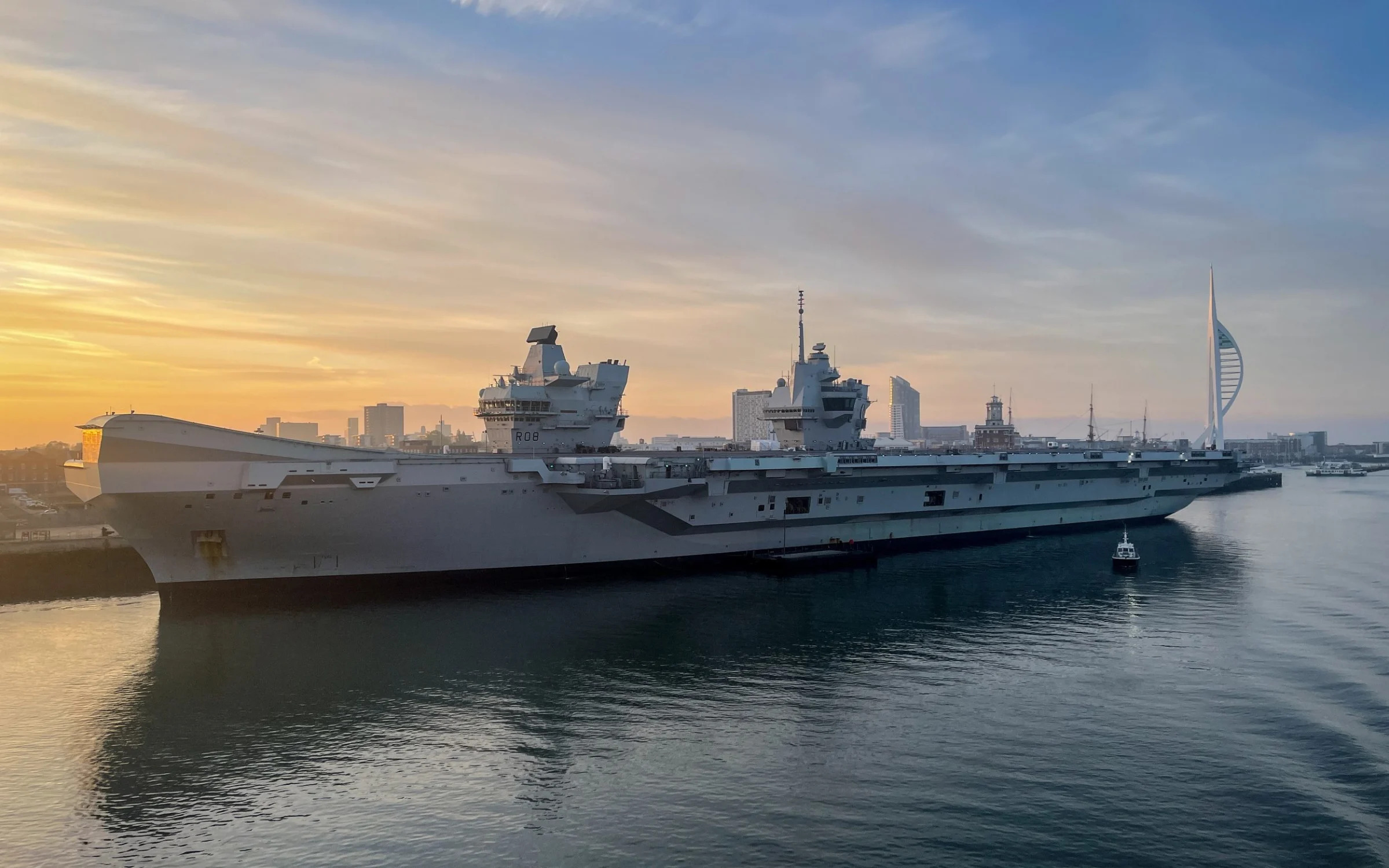The US may have just ripped the heart out of the Royal Navy

The sun rises behind the Royal Navy's HMS Queen Elizabeth aircraft carrier.
In war, the adage “necessity is the mother of invention” takes on new urgency. The ability to keep pace with change can be the difference between life and death; between victory or defeat. As the war in Ukraine rages in Europe, and tensions continue to brew in the Pacific, the development of new military capabilities is happening at an extraordinary pace.
The latest example is the Americans’ announcement that they have successfully tested a low-cost bomb that can sink ships the size of aircraft carriers. The prospect of such a weapon haunted the development of carriers for decades, with sceptics deeming their conceivable vulnerability to such attacks reason enough not to make our new carriers – the HMS Prince of Wales and HMS Queen Elizabeth – a pillar of our defensive strategy.
On the surface, one can understand the concern. In this test, dubbed Quicksink, the guided bomb was successfully dropped by a US Air Force B-2 Spirit stealth bomber on to the decommissioned USS Tarawa – a 39,000-ton assault ship the size of a small carrier – as part of an exercise imagining war with China. To the uninitiated, it might seem strange to showcase battle-winning technology to a potential foe, but as the military theorist Sun Tzu espoused in The Art of War, the greatest achievement in warfare is winning without a fight: this exercise was designed to deter Beijing from actions that could risk direct conflict with Washington.
And yet – worryingly for the Royal Navy – this show of force could have unintended consequences, sparking a new miniature arms race as China seeks to develop such a weapon of its own. If successful, that would endanger Britain more than America given our strategic reliance on aircraft carriers.
Already, for some, the wisdom of the investment in carriers has been stretched by events in Ukraine, where new technologies are greatly impeding naval forces’ ability to operate. Russia’s Black Sea fleet has been made a strategic irrelevance – forced to leave its Crimean ports – by innovative tech deployed by a country, Ukraine, that doesn’t even have a navy.
Kyiv’s swarms of cheap drones – working in tandem with advanced Western-donated missiles – have been a revelation, proving that technology is advancing at such a pace that old assumptions are being thrown out of the window. Hence why so many called for the defence review just signed off by Sir Keir Starmer.
Optimists take a different view of carriers, quick to point out that neither China nor Russia have anything akin to the B-2 stealth bomber which dropped this new weapon. They also say that escorting ships would be able to shoot down any aircraft seeking to drop such a bomb – carriers are highly effective if they are properly defended and manoeuvring well.
More fundamentally, they say that carriers project strength and enable us to more easily go to our allies’ aid. It’s worth noting that the West’s rivals are still heavily investing in carriers. China’s third – Fujian – is currently undergoing sea trials.
Yet war is changing faster than anyone can predict. Remember two years ago, when drones allegedly made tanks “redundant”? Now tanks are once more one of the most requested resources by Kyiv, armed with anti-drone shields.
So it is the speed of adaptation that is key. But the billion dollar question is: can an aircraft carrier evolve with the times, or is it already outdated technology?
AfriPrime App link: FREE to download...
- Questions and Answers
- Opinion
- Story/Motivational/Inspiring
- Technology
- Art
- Causes
- Crafts
- Dance
- Drinks
- Film/Movie
- Fitness
- Food
- Παιχνίδια
- Gardening
- Health
- Κεντρική Σελίδα
- Literature
- Music
- Networking
- άλλο
- Party
- Religion
- Shopping
- Sports
- Theater
- Wellness
- News
- Culture
- War machines and policy


